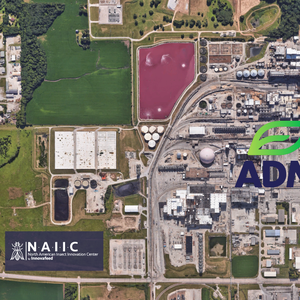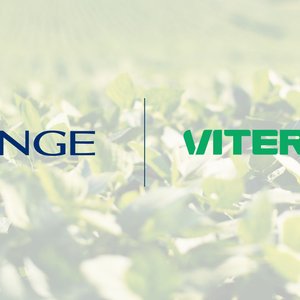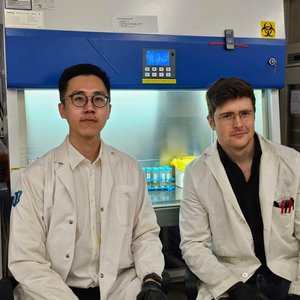Speaking in the plenary session of the
“There has been a dramatic reduction in negative environmental impacts from aquaculture, especially over the last decade, due to improved technology,” Allan said, adding that these improvements would continue. Sustainable aquaculture was already a reality for most industry sectors and individual operations, he said.
Explaining the rapid growth of aquaculture, Allan said that fish was the most important source of protein in the world, representing around 25% of total protein intake in many developing countries and around 10% in North America and
Consumption of food fish has more than doubled in the last three decades, from 40 million tonnes in 1970 to 86 million tonnes in 2000 and consumption is predicted to reach 110 million tonnes by 2010 and nearly 140 million tonnes by 2025. This increase is being driven mainly by global population growth, predicted to reach 6.8 billion by 2010, up from 6 billion in 2000. Worldwide, per capita consumption of fish has also increased from approximately 11 kg/per person per year in 1970 to nearly 16 kg per person per year in 2000.
While seafood consumption increased by 31% from 1990 to 1997, supply from capture fisheries increased by only 9%. Fishing fleets in many countries are heavily subsidized by governments (on average by 20-25%) and improvements in fishing technology have driven many fisheries to collapse. Over 50% of ocean fisheries are fully exploited and 70% listed as in need of urgent management. Future increases in seafood supply from capture fisheries are unlikely.
Many of the methods used to capture fish are relatively “non-selective”, resulting in by-catch estimated to range from 17.9 to 39.5 million tones per year. “To put this in perspective, the total catch of food fish from capture fisheries is around 60 million tones a year”, Allan said.
Shrimp capture fisheries have among the worst by-catch ratios: fourteen of the top twenty fisheries with the highest amount of by-catch per unit of landed catch are shrimp fisheries. “The average amount of by-catch for these fourteen shrimp fisheries is about 8kg of discarded fish and other species for every 1kg of shrimp landed”.
In addition to impacts on other fish species, fishing practices have impacted greatly on other components of the marine ecosystem including benthic communities, sea birds and mammals. Before techniques were improved, the purse seine fishery for tuna in the 1960s caused mortality of an estimated 350,000 dolphins a year
Fishmeal and Fishoil
Aquaculture also has environmental impacts. Some 22 million tonnes of fish from capture fisheries each year are used to produce fishmeal and fishoil, although lthe species used - “bait fish” or “industrial fish” are not generally consumed directly by humans. Although there is no reliable estimate of the total amount of feed fish used by aquaculture, the figure is probably around 4 million tonnes/yr.
Claims that increased use of fishmeal and fishoil is driving fisheries for baitfish to extinction and that because of conversion efficiencies, aquaculture of species fed diets containing high contents of fishmeal and do not contribute to increasing net global supplies of fish are not supported by the facts, Allan said. “Aquaculture production of food fish in 2000 was approximately 35 million tonnes, including approximately 16.3 million tonnes of species fed aquafeeds. Approximately 15 million tonnes of aquafeeds were used containing a total of 2.4 million tones of fishmeal (and 0.55 million tonnes of fishoil)”, he explained. “Considering that fishmeal is a dry product and requires approximately 4 kg of wet fish to produce 1 kg of fishmeal, the total amount of wet fish used to produce 2.4 million tonnes of fishmeal (and 16.3 million tonnes of aquaculture product) was 9.6 million tones”.
Production statistics for bait fish landings, fishmeal production and aquaculture show that there is no significant relationship between steeply increasing aquaculture production and landings of bait fish because while use of fishmeal for aquaculture has increased, use for other purposes has decreased (the same applies to fishoil). Aquaculture is taking a greater share - 18% of total supplies of fishmeal in 1988 compared with 34% in 2002.
“Clearly this reallocation of fishmeal and fishoil to aquaculture cannot continue indefinitely and if aquaculture is to continue to grow, aquafeeds with reduced contents of fishmeal and fishoil are needed”, Allan told the conference. This is happening. The identification and use of alternative protein and lipid sources has been an international research priority for at least 15 years and significant advances have been made.
“Fishmeal has been completely replaced in diets for many species and included at very reduced levels in feeds for many others. Even fish oil can now be included at much lower contents even in diets for coldwater marine carnivores. Formulated feeds are being developed to replace the use of feed fish for several aquaculture industries in
Mangrove Destruction
Although aquaculture has often been blamed for having a large role in the loss of over 50% of global mangrove forests since the 1960s, Allan says the reality is that aquaculture is responsible for only about 5% of the total. The big culprits, he said, have been due to deforestation for other land uses, harvesting of mangroves for fuel and other human activities.
“Losses due to aquaculture were primarily due to the construction of brackish water ponds, mainly for shrimp farming. However, it is now widely recognized that mangrove areas are unsuitable for aquaculture ponds because most mangroves occur in acid-sulphate soils and these soils are extremely unproductive for aquaculture. Very little new pond construction now occurs in mangrove areas and information about how to recognize acid-sulphate soils is being widely disseminated”, he said.
In
Effluent from aquaculture
T release into the environment from ponds and sea cages of wastes that contain elevated concentrations of organic matter and nutrients is a major concern in some areas. Concerns are also expressed about the use of chemicals, notably antibiotics, to control diseases.
Fortunately, Allan said, increasing awareness and improved technology have greatly reduced these problems. “For the vast majority of cultured fish (86% of fish are cultured in freshwater), there is little or no routine water exchange or release of water to the environment. For brackishwater aquaculture, there has been an almost order of magnitude reduction in the amount of routine water exchange. In the early 1980’s, routine daily water exchange of 10% was practiced. Improved understanding of water quality management and the importance of retaining nutrients, have reduced routine water exchange to around 1%/day”.
For sea cage farming, improvements in technology, especially with regard to better feeds, has also reduced impacts from effluent. Allan gave an example from the salmon industry, where in 1974, diets contained between 45 and 50% protein (7.2-8.0% nitrogen) and food conversion ratios (the amount of dry feed used to produce the same amount of wet fish) were around 2.25:1. “Today, feeds contain 35-40% protein (5.6-6.4% nitrogen) and food conversion ratios of less than1 – 1.3:1 are achieved” he explained.
When it comes to antibiotics, Allan said that in 1987, 50 tonnes of antibiotics were used to produce 50,000 tonnes of salmon. In 1997, after vaccines were developed for some major diseases, and improved husbandry, about 1 tonne of antibiotics were used to produce 325,000 tonnes of salmon.
Organic and nutrient-rich wastes from sea cages do have an impact on the sediment chemistry and benthic fauna below cages, Allan said. However, extensive studies in tropical to cold temperate locations have shown impacts to be both spatially and temporally localized. “For sea cage operations where pelleted feeds are used, detectable impacts (changes to benthos or sediment chemistry) are confined to a maximum of about 300 meters from the cages (for most operations the distance is much smaller) while for species fed feed fish, impacts have been recorded up to a maximum of about 1 km. After fallowing, or when cages have been removed from the water, impacts are no longer detected at all after periods of several months up to a couple of years in the worst cases”.
Health and Disease
Managing aquatic animal health is an industry priority and many industries and governments are investing heavily to reduce problems with disease transmission. Diagnostic techniques are rapidly improving and strict quarantine and regulations to manage translocations have helped reduce risks of disease transmission both within aquaculture industries and between aquaculture and wild populations.
Allan gave the example of British Colombia’s “eggs only” importation policy that has been adopted to minimize risks of introducting exotic diseases. “All pathogens found in farmed fish in British Colombia are endemic to the region and have been associated with wild fish for some time”, he said.
“In
“For some diseases, selective breeding offers the potential to reduce the expression of disease, not only protecting aquaculture but also reducing the chances of spreading disease to wild populations”, Allan said. “In
Genetic implications
In comparison with terrestrial agriculture, genetic improvement in aquaculture species is in its infancy. Although genetic improvement programs are in place for several species, the massive gains in growth rates, food conversion efficiency and disease resistance generated by breeding programs are largely in the future for aquaculture, Allan said. “A lack of attention to maintaining genetic diversity in some aquaculture operations has constrained genetic diversity in cultured fish. There is potential for genetic impacts from aquaculture and three main approaches are taken to reduce risks. The first is to prevent escapes. It is absolutely not in the interests of aquaculture for animals to escape and continuing improvements in containment technology are reducing the problem. Secondly, maintaining the genetic diversity in cultured stocks reduces potential negative interactions with wild populations. Thirdly, where genetic structure has been altered through breeding programs, the development and adoption of commercially viable technology to produce reproductively sterile animals is a priority”.
“While risks of negative genetic impacts exist, the more extreme claims are alarmist and unfounded. Sea cage farming of salmon in British Colombia has been blamed in the media for the decline in wild salmon populations despite compelling, comprehensive evidence that cyclic climatic change, massive over fishing and freshwater habitat destruction are primarily responsible. The role aquaculture has played in the decline of wild salmon has been shown to be relatively minor. The availability of this information in the prime scientific literature before some of these claims were made is unfortunate and disturbing.
Theoretically, hybrids caused by matings between aquaculture and wild populations might produce fish that are more or less “fit” than wild fish. Most available evidence indicated that viable hybrids are rare and have lower reproductive success (due in part to behavioural factors) than wild fish. Continuing efforts are needed to ensure aquaculture and enhancement programs do not constrain genetic diversity. With the massive selection pressure placed on some wild stocks of fish by overfishing, hybridisation with aquaculture species may actually increase the genetic diversity in wild populations and produce fish better equipped to cope with the rapidly changing environment”.
Turning his attention to the increase in the number and influence of environmental protest groups throughout the western world over the last couple of decades, Allan said the phenomenon can largely be attributed to an increasing environmental awareness in western countries in general. “Overall this is a positive trend and environmental groups and protest groups have an important role to play”, he said. “They force industry and government to closely examine practices and reduce negative environmental impacts”. Allan went on to note that some of the publications and claims from some protest groups are unbalanced, overly emotive and alarmist. “These can be counter-productive, reduce the credibility of the environmental movement and slow down improvements”.
Allan said that despite claims from some protest groups, they are not the “voice of the community” but most often represent a vocal minority, citing an example from
Dr. Geoff Allan is the Principal Scientist, Aquaculture, NSW Fisheries and immediate past-president of the World Aquaculture Society. For more information, contact him at: allang@fisheries.nsw.gov.au
The next World Aquaculture meeting will be WORLD AQUACULTURE 2005, to be held at











